Author: EVAI

Solar-powered Pebble Flow EV travel trailer makes glamping $109,500 affair
- Pebble first showed its Flow electric travel trailer in 2023
- The Pebble Flow is expected to enter production early this year
- The Pebble Flow costs $109,500 and comes with a 45-kwh LFP battery pack
California-based startup Pebble on Monday unveiled a production-intent version of its Flow EV travel trailer, which it hopes to begin delivering to customers in the first half of the year.
First shown in 2023, the Pebble Flow uses a 45-kwh LFP battery pack and self propulsion to assist a tow vehicle, helping to counteract the substantial range loss EVs experience while towing, or the equivalent drop in fuel economy for gasoline and diesel vehicles, the startup claims.
Battery specs are unchanged from what Pebble previously discussed, but the company claims it has made changes to the drivetrain, which can also be used to align the trailer with a tow hitch and even maneuver it in and out of parking spaces using a remote-control function, as part of a smartphone app.
As before, Pebble claims the battery pack can also be used as a backup power source at campsites. It can be charged using conventional AC or DC connectors, as well as an integrated 1.1-kw solar array.
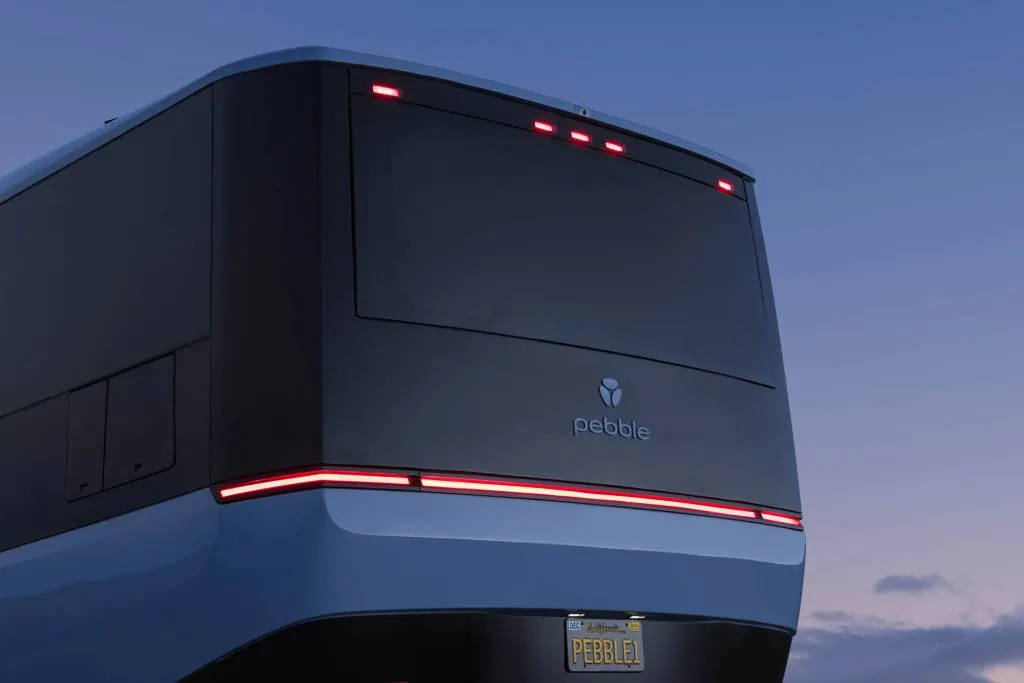
Pebble Flow EV travel trailer
Pebble made some design tweaks, including integrated taillights, aimed at improving both aerodynamics and ground clearance. It also increased the size of the Flow’s pass-through storage space, and added all-terrain levelers and a hitch receiver for accessories like bike racks.

Pebble Flow EV travel trailer
Changes were also made inside, including cabinets that flip up rather than down for easier access, side and rear windows that flip open to increase airflow, a bigger door opening, and increased storage space. A motorized awning has been added as well which, along with lights, stairs, and stabilizers, can be activated at the push of a button.
Pebble expects to begin production early this year, with the first customer deliveries following soon after. Customers can reserve a build slot with a $500 refundable deposit.
The first examples will be Founders Editions with all options included and available limited-edition colors for $175,000. Pebble didn’t break out of the cost of those version, but regular pricing starts at $109,500 for the basic version and $135,500 for a dual-motor version bundling remote control and other tech features.
Pebble isn’t the only startup thinking along these lines. The Lightship AE.1 Cosmos Edition is another travel trailer with a built-in battery pack for supplementary propulsion—and a $250,000 starting price. Airstream unveiled an EV-friendly travel trailer concept in 2023, while Thor Industries—owner of the iconic trailer brand—has proposed a range-extended electric RV as an alternative.
Note — This story was updated with revised pricing from Pebble

2026 Genesis GV60 brings tech updates
- Genesis is giving the GV60 a mild refresh for 2026
- Genesis revealed the updated GV60 globally, but hasn’t detailed specs
- The revamped 2026 GV60 should arrive in the U.S. later this year
The Genesis GV60 is about to receive its first major refresh, which will include a new dashboard display and minimal styling changes.
Genesis revealed the updated GV60 in its home market of South Korea on Monday. Sales are expected to begin in that market later this quarter, and while U.S. launch timing wasn’t discussed, the refreshed GV60 is also expected to land here as a 2026 model.
As hinted at by spy shots of camouflaged prototypes, the styling changes are relatively small. The front fascia is new, while the headlights retain the same shape but receive new internals with smaller LED elements. A new five-spoke 21-inch wheel design will be available, and more exterior trim—such as the wheel arch cladding and the lower part of the rear fascia—is now body color.
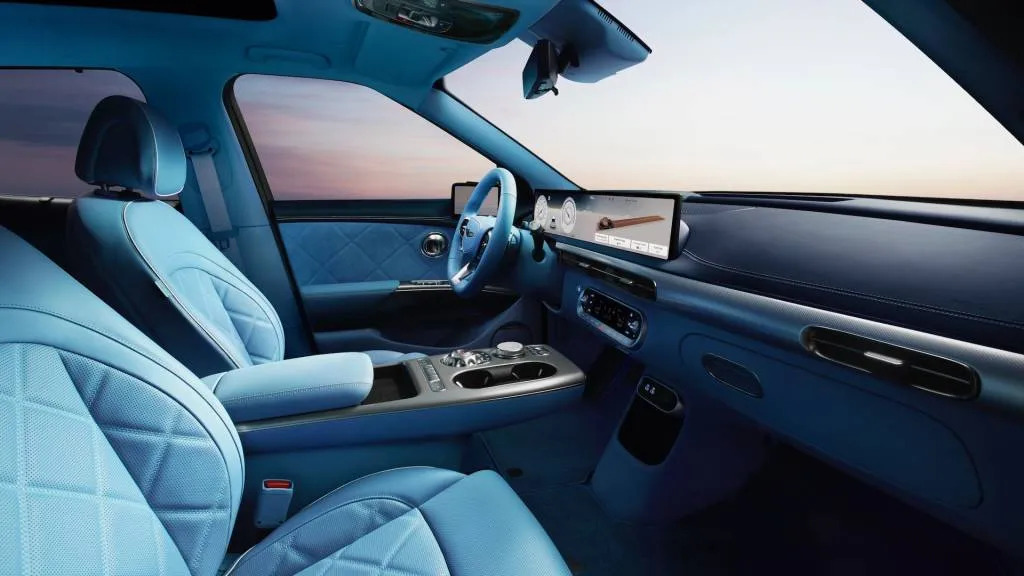
2026 Genesis GV60
Inside, a 27-inch dashboard display occupies the same real estate as the previous interface, but Genesis eliminated the bezel that previously separated the instrument cluster and touchscreen elements. Other aspects of the imaginatively-designed cabin, such as the crystal-orb shifter, remain.
Genesis did not discuss specifications, but a bigger change may come in the form of an 84-kwh pack, replacing the 77-kwh pack currently used in single-motor rear-wheel-drive models and the 77.4-kwh pack used in dual-motor all-wheel-drive models. The bigger pack has already been implemented in the Hyundai Ioniq 5 and Kia EV6, which share the GV60’s E-GMP platform.
Also unannounced at this time, but expected as part of the GV60’s refresh, is a Magma performance model, the first of a new sub-brand competing against the likes of BMW M and Mercedes-AMG. Genesis showed a GV60 Magma concept at the 2024 New York auto show, and confirmed a production version later in the year.
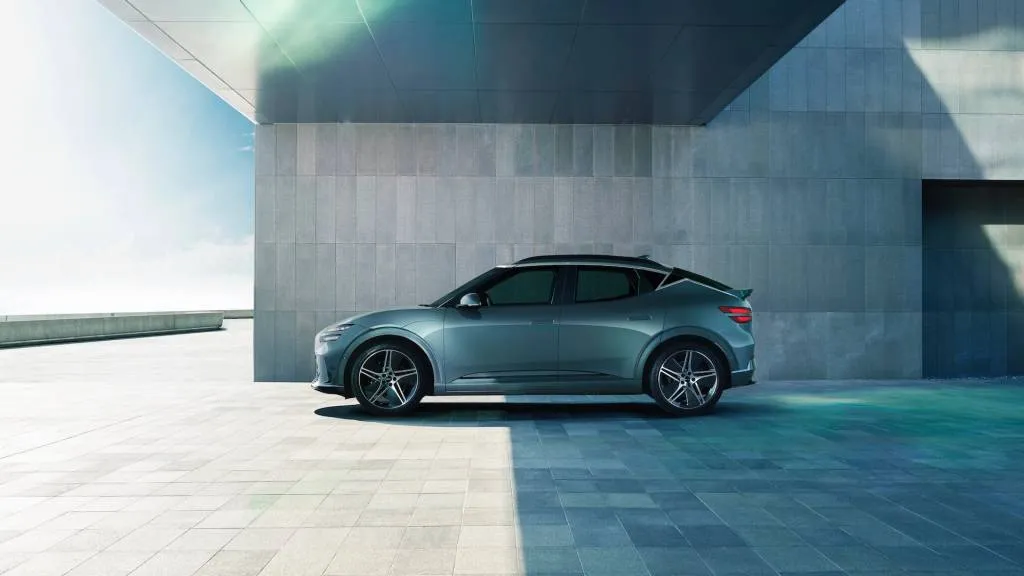
2026 Genesis GV60
The Magma will likely surpass the 429-hp output of the current GV60 Performance. Genesis also offers a non-Performance all-wheel-drive variant rated at 314 hp. Rear-wheel drive models are rated at 225 hp, but offer the most EPA range of any current GV60 configuration, at 294 miles.
The GV60 arrived in the U.S. as a 2023 model and was a Green Car Reports Best Car To Buy 2023 finalist. The rear-wheel-drive powertrain was introduced for 2024, followed by a less-expensive all-wheel-drive version for 2025. Outside the U.S., the GV60 was also the first EV to offer wireless charging, although it’s unclear if that feature will make it here.
Jay Leno had his Chrysler Turbine Car’s engine rebuilt
 In the 1960s, Chrysler built a handful of cars powered by aircraft-style turbine engines. And where does one take a turbine when it’s in need of a rebuild? To the original manufacturer, of course. Like the other cars in his collection, Jay Leno’s Chrysler Turbine Car saw regular use—until its engine failed. So Leno sent it to Williams…
In the 1960s, Chrysler built a handful of cars powered by aircraft-style turbine engines. And where does one take a turbine when it’s in need of a rebuild? To the original manufacturer, of course. Like the other cars in his collection, Jay Leno’s Chrysler Turbine Car saw regular use—until its engine failed. So Leno sent it to Williams…

Porsche has been developing in-wheel electric motors since 1900
Porsche built its reputation with internal-combustion sports cars, but at the turn of the 20th century Ferdinand Porsche, whose son Ferry would later start the sports-car brand, tinkered with electric motors—including in-wheel hub motors.
The first electric-vehicle boom occurred at the turn of the 20th century, before internal combustion established itself as the dominant technology. And on Apr. 4, 1900, an EV that the then 24-year-old Porsche helped develop was unveiled at the Paris World’s Fair.
Having previously a complete electric car in 1898, Porsche designed electric motors to be integrated with the front hubs of a vehicle built by the Austrian firm of Jason Lohner & Co. in a period of only 10 weeks. Each motor generated 2.4 hp, which got the vehicle, known as a Lohner-Porsche, up to a top speed of 19.8 mph. Besides the motors, another notable innovation of the Lohner-Porsche was four-wheel braking—a rarity at the time.
Working with Ludwig Lohner, Porsche continued to develop hub motors, creating three sizes with outputs up to 11.8 hp for use in trucks and buses as well as passenger cars. These motors were intended for use with lead-acid batteries—typical of the time—that provided a claimed range of up to 31 miles.
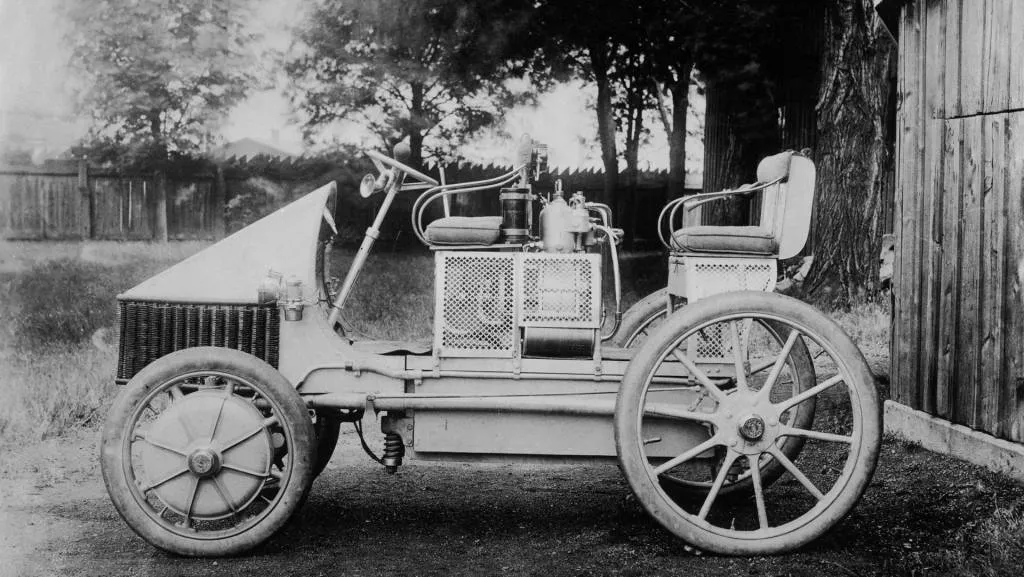
Lohner-Porsche Semper Vivus hybrid
Porsche also designed an all-wheel drive electric race car named La Toujours Contente (French for “the one who’s always happy”), with one 13.8-hp motor powering each wheel. But the engineer’s hub motors saw the most use in hybrids—starting with the Lohner-Porsche Semper Vivus (Latin for “always alive”), which combined front hub motors with a gasoline engine.
Lohner and Porsche eventually applied the same hybrid layout to about 300 production vehicles, including 40 for the Viennese fire department, as well as assorted taxis and private passenger cars.
More than a century later, in-wheel motors are still attracting interest, although adoption for production vehicles has been slow. Chinese automaker Dongfeng claimed to be the first to use them in a fully-homologated passenger car in 2023, although they were also intended for the Lightyear 0 and Lordstown Endurance before production of both vehicle stalled.
Aptera is also including hub motors in what it claims will be a super-efficient 3-wheeler, and patent filings from Ferrari, Hyundai, and Toyota indicate they’re being studied by established automakers as well.
Nissan executive: “I see a very strong recovery”
 Ponz Pandikuthira, chief planning officer of Nissan Americas, sees strong momentum as it refreshes its portfolio Nissan has redesigned profitable QX80 and Armada, sees good demand for entry Kicks “There’s no way we’re going to run out of cash in 12 months,” Pandikuthira said The headlines suggest Nissan is in trouble. Cutting 9,000 jobs, slashing…
Ponz Pandikuthira, chief planning officer of Nissan Americas, sees strong momentum as it refreshes its portfolio Nissan has redesigned profitable QX80 and Armada, sees good demand for entry Kicks “There’s no way we’re going to run out of cash in 12 months,” Pandikuthira said The headlines suggest Nissan is in trouble. Cutting 9,000 jobs, slashing…

VW ID.4 set to resume sales, production with door-handle fix
- Leaky door handles halted ID.4 production and deliveries in September
- With replacement parts ready, VW is soon restarting production
- Fixing customer cars and dealer stock is the priority
Volkswagen on Friday reported some disappointing U.S. delivery numbers for the year for what had been set to be its mass-market electric vehicle. It sold 17,021 ID.4 EVs in the U.S. in 2024—down 55% versus 37,789 sales in 2023.
Partly, the issue was simply that the ID.4 lineup wasn’t on sale for much of the year—first with a pause as refreshed 2024 models rolled in, then with a recall that stopped production and deliveries.
VW also on Friday confirmed that the ID.4 is back on track. It has enough replacement door handle hardware to restart deliveries of its ID.4 and fix a backlog of vehicles in dealer stock—and, within the next few weeks, to resume production at its U.S. plant in Chattanooga, Tennessee.
VW issued the recall of all 2021-2024 ID.4 models in September, amounting to 98,806 vehicles, as it ramped up a remedy for defective door handles that might cause the EV’s door to open unexpectedly. The recall effort has since been expanded to include 99,064 vehicles in the U.S. plus 20,790 vehicles in Canada.
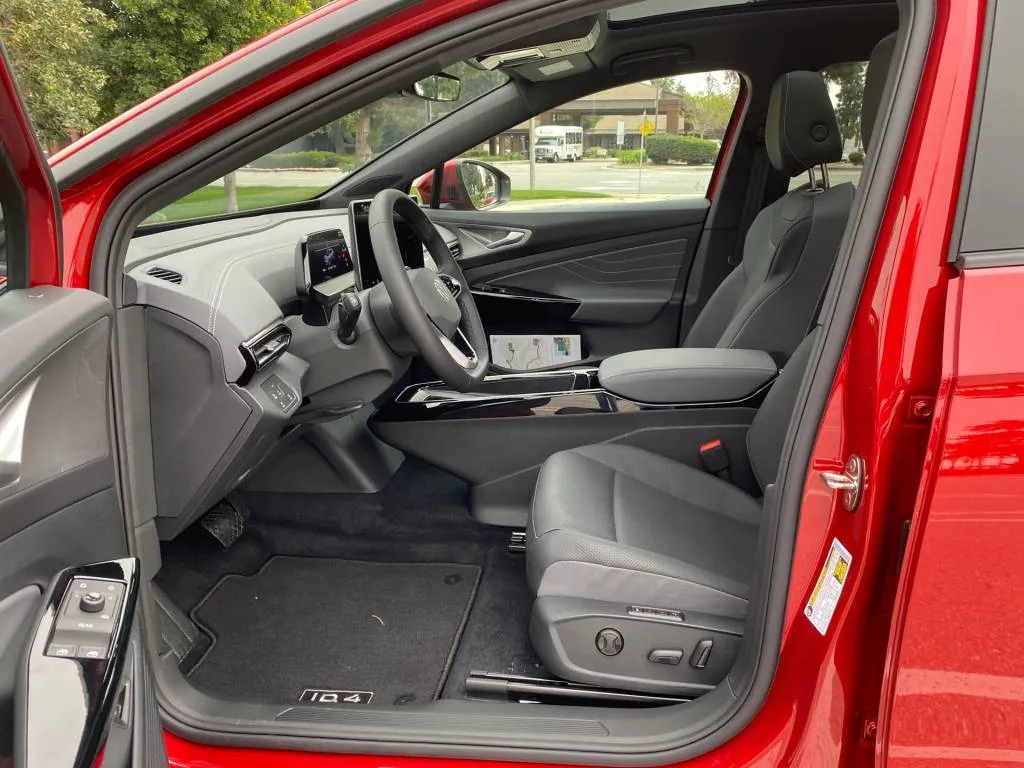
2024 Volkswagen ID.4
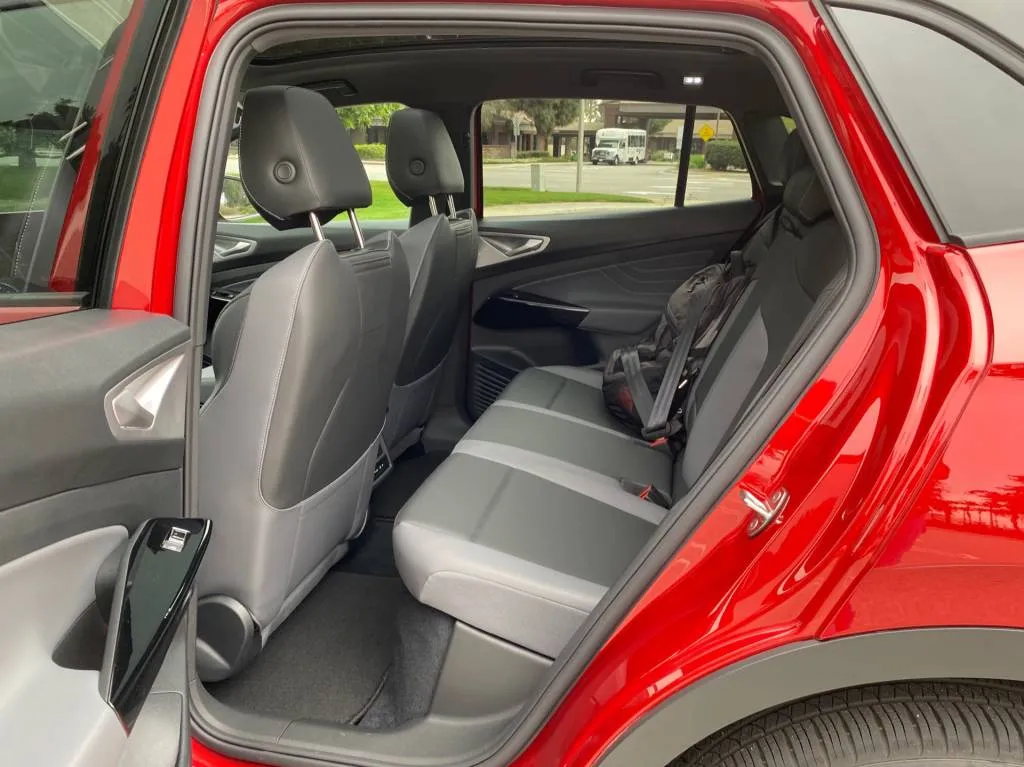
2024 Volkswagen ID.4
At that time, VW also issued a stop-sale for the ID.4, covering both new and pre-owned vehicles in dealer inventory, and it stopped production of the model in both Zwickau, Germany, and Chattanooga, Tennessee.
Concerns focused on the design of the door handle itself, and a part that couldn’t effectively keep out water. According to recall documents filed with the National Highway Traffic Safety Administration (NHTSA), water could enter the door handle, reaching a printed circuit board and causing “communication issues” between the handle and control unit. That might result in a clicking noise that VW said in those documents was similar to what the door makes when it’s normally unlocked.
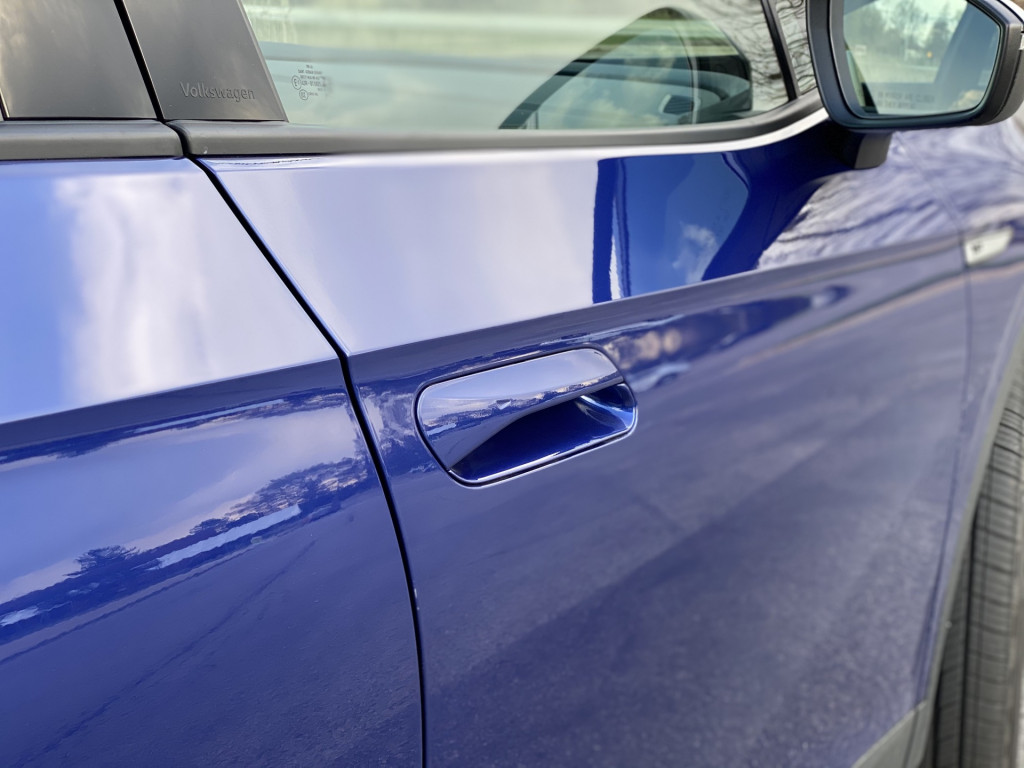
2021 Volkswagen ID.4 1st Edition
VW has already sent letters out to owners, and it’s shipping a redesigned door handle out to dealerships, which will be using them not only to perform the recall fixes but get deliveries of their own stock restarted once again. “The priority is to get existing cars repaired and to get cars that were sitting on dealer lots into the hands of customers,” said Volkswagen spokesperson Mark Gillies.
Under the recall, dealers will inspect and replace the door handles as needed, and update vehicle software. VW stressed that under federal rules, the recall must be completed before delivery.
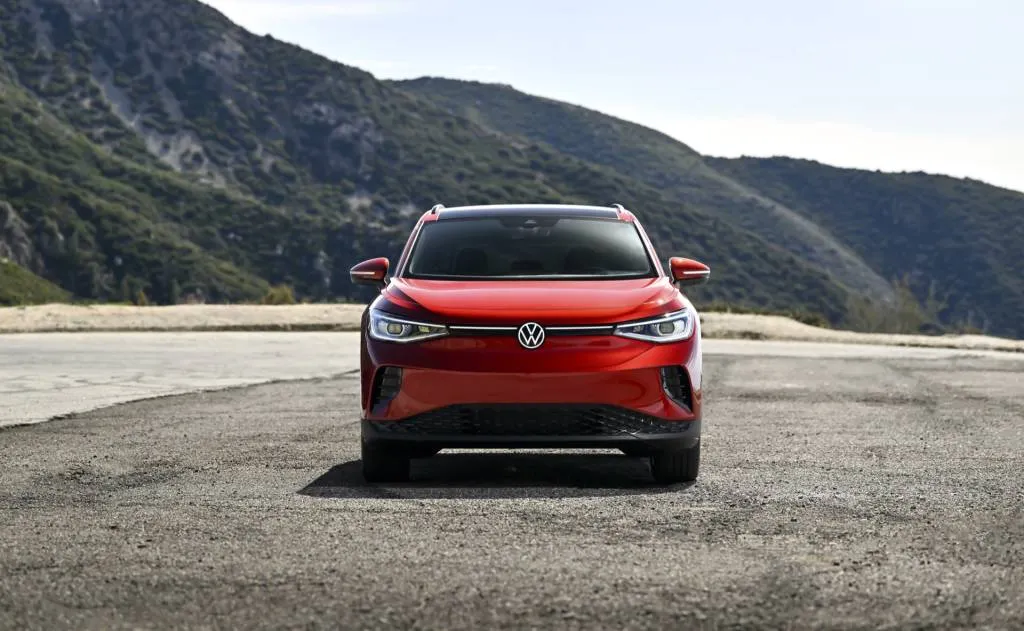
2025 Volkswagen ID.4
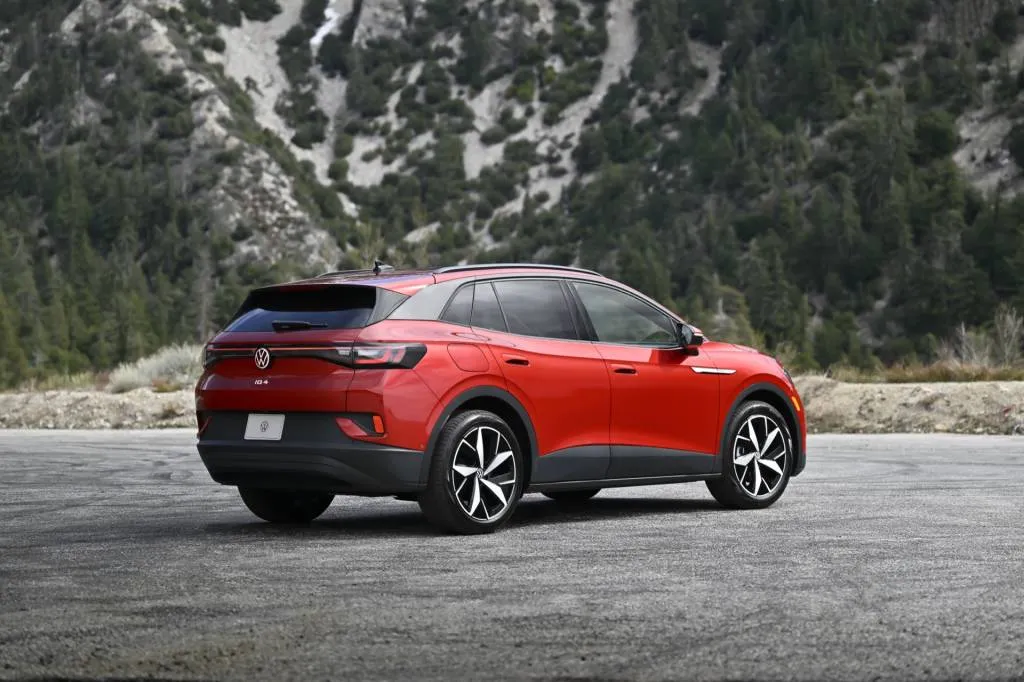
2024 Volkswagen ID.4
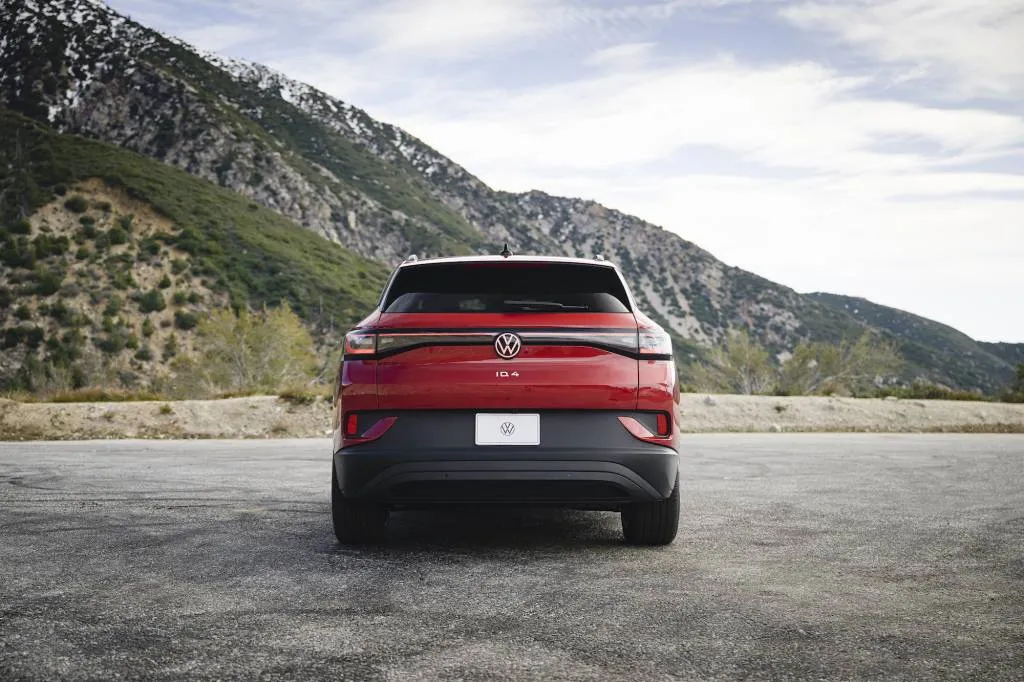
2025 Volkswagen ID.4
The 2024 Volkswagen ID.4 is a top-seller and up until now received a series of meaningful improvements resulting in quicker acceleration and more range, plus speedier new infotainment hardware and a much-improved interface. The interface had especially soured the experience for some early adopters (it recalled 2021-2023 models for those screen issues). Considering the ride, handling, and packaging advantages this model has had all along, the ’24 now feels like what it was supposed to be at launch.
All 2024 VW ID.4 models have qualified for the full $7,500 EV tax credit—bringing the base $41,160 price effectively to $33,660 for some), while the 2025 VW ID.4 has missed the cut, as of yet. But the 2025 ID.4 gets ChatGPT functionality that sets the stage for a next-generation in-car voice assistant.
Nissan Xterra might return to tackle Toyota 4Runner
 Trademarks for the Nissan Xtrerra name are being renewed, hinting at a possible return of the rugged SUV. Nissan filed trademark renewal applications for “Xterra” and “Nissan Xterra” in the U.S. Dec. 23, 2024. Both trademarks apply to “motor vehicles, namely automobiles, sport utility vehicles, and structural parts thereof.” Trademark filings can…
Trademarks for the Nissan Xtrerra name are being renewed, hinting at a possible return of the rugged SUV. Nissan filed trademark renewal applications for “Xterra” and “Nissan Xterra” in the U.S. Dec. 23, 2024. Both trademarks apply to “motor vehicles, namely automobiles, sport utility vehicles, and structural parts thereof.” Trademark filings can…

Future big GM EVs might accelerate charging with multiple connectors
With megawatt charging slow to ramp up, General Motors appears to have an alternative solution to speed up charging for electric commercial vehicles.
This is discussed in a patent filing published by the United States Patent and Trademark Office (USPTO) Nov. 26, 2024, although it was originally filed by GM about two years earlier. In the document, GM notes that medium-duty and heavy-duty electric vehicles require large battery packs that can be time-consuming to charge using conventional methods.
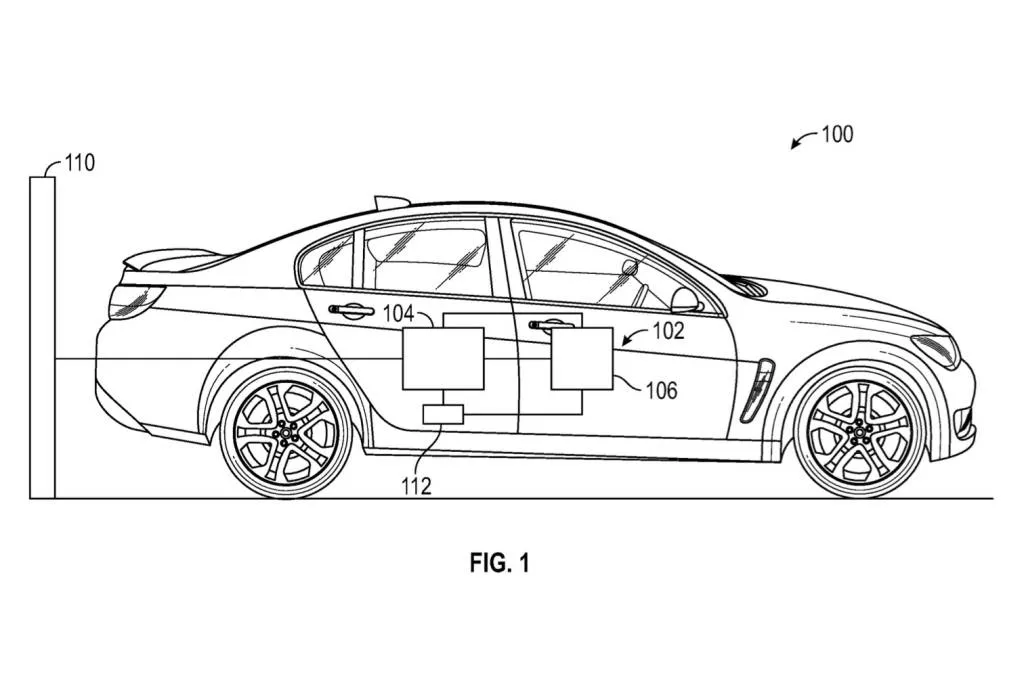
General Motors multi-port charging system patent image
GM’s proposed solution involves equipping vehicles with multiple charge ports and dividing packs into smaller “subpacks” that can be connected in parallel. This allows individual subpacks charged from either a single charge port or both ports simultaneously, instead of charging the entire pack through a single port.
This solution is aimed at larger vehicles that would require bigger packs than the average passenger car (don’t be led astray by the passenger car used in the filing’s example, above), but GM’s inclusion of medium-duty vehicles wouldn’t leave out the GMC Hummer EV or the largest GMC and Chevrolet electric pickups, which do fall into that category based on weight.
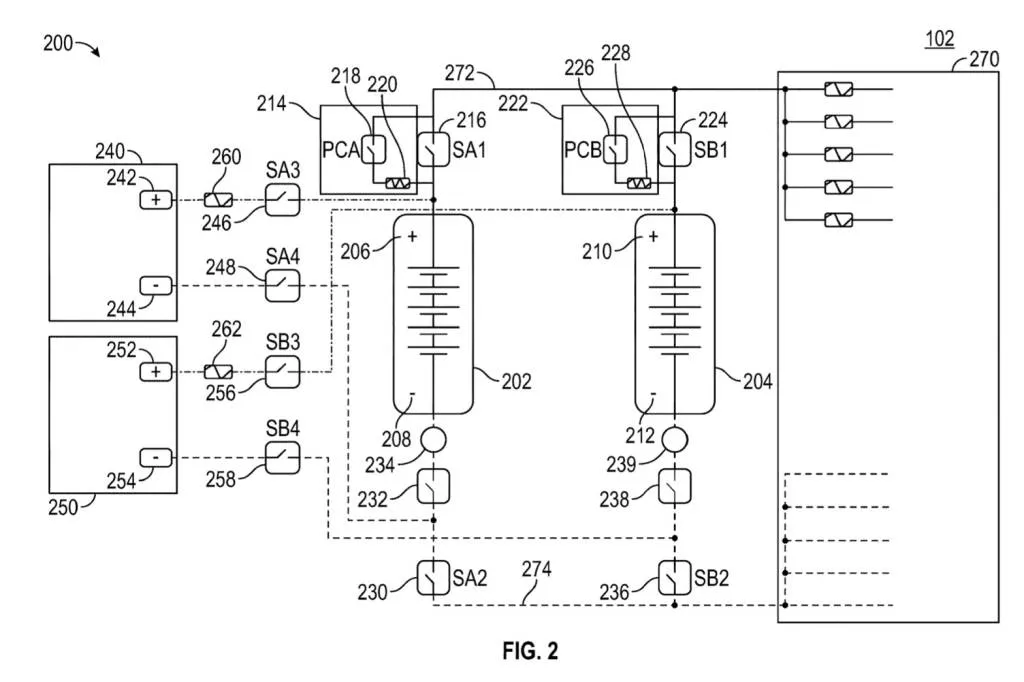
General Motors multi-port charging system patent image
Megawatt charging was announced several years ago as a charging solution for electric big rigs, but it’s been slow to roll out, partly because of the on-the-ground electrical realities. Tesla confirmed megawatt charging for the Cybertruck and Semi, but its Supercharger V4 tech hasn’t truly yet arrived.
We’re already seeing a number of different solutions to speed up charging based on what’s currently available at the connector level. The GMC Hummer EV essentially uses 400-volt battery packs connected in parallel most of the time, albeit with just one charge port. Meanwhile, Porsche splits its 800-volt Macan battery pack into two 400-volt virtual packs to increase charging speed.
Ford Escape and Lincoln Corsair PHEV recalled because they could short circuit
 Ford is recalling about 20,000 plug-in hybrid SUVs due to a manufacturing defect that could cause battery cells to short circuit. The recall encompasses 2020-2024 Ford Escape Plug-In Hybrids and 2021-2024 Lincoln Corsair Grand Touring plug-in hybrids, with 16,480 Fords and 4,004 Lincolns affected. These vehicles may have battery packs with cells…
Ford is recalling about 20,000 plug-in hybrid SUVs due to a manufacturing defect that could cause battery cells to short circuit. The recall encompasses 2020-2024 Ford Escape Plug-In Hybrids and 2021-2024 Lincoln Corsair Grand Touring plug-in hybrids, with 16,480 Fords and 4,004 Lincolns affected. These vehicles may have battery packs with cells…
The death list: These cars have been discontinued for 2025
 The 2025 calendar year ushers in a robust crop of new and redesigned 2025 model years, with highlights ranging the high and mighty Chevy Corvette ZR1 to the cheeky, efficient Honda Civic Hybrid. But on the sadder end of the spectrum, we’re tallying the list of vehicles that didn’t make the cut—the cars, trucks, SUVs, and EVs/hybrids that…
The 2025 calendar year ushers in a robust crop of new and redesigned 2025 model years, with highlights ranging the high and mighty Chevy Corvette ZR1 to the cheeky, efficient Honda Civic Hybrid. But on the sadder end of the spectrum, we’re tallying the list of vehicles that didn’t make the cut—the cars, trucks, SUVs, and EVs/hybrids that…





